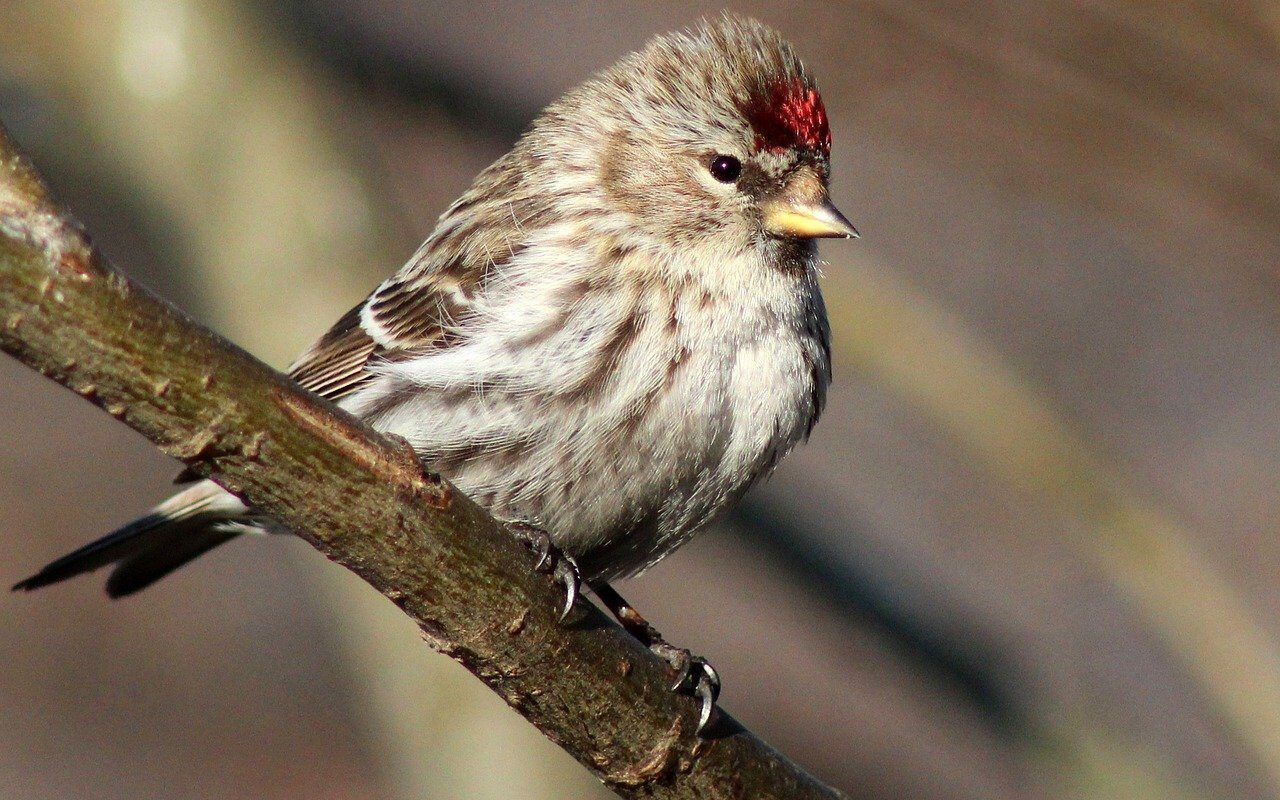In some areas, the snow is already started in fits and starts across Michigan, and there are still plenty of bird species flitting about in the snowflakes. Northern cardinals, red-breasted nuthatches, downy woodpeckers, dark-eyed juncos, and American tree sparrows are ready to visit your backyard winter bird feeders.
Again this year, Michigan is experiencing a rare irruption – a sudden, sharp increase of a natural population due to favorable changes in the environment – of northern finches. Common redpolls, pine siskins, and evening grosbeaks have arrived in record numbers, searching for cone and seed crops across the state. Now that Michigan winter weather has set in, you can watch these seasonal songbirds flock to your outdoor bird feeders.
Table of Contents Bird Feeders in Winter
Choose Your Winter Bird Feeders Wisely
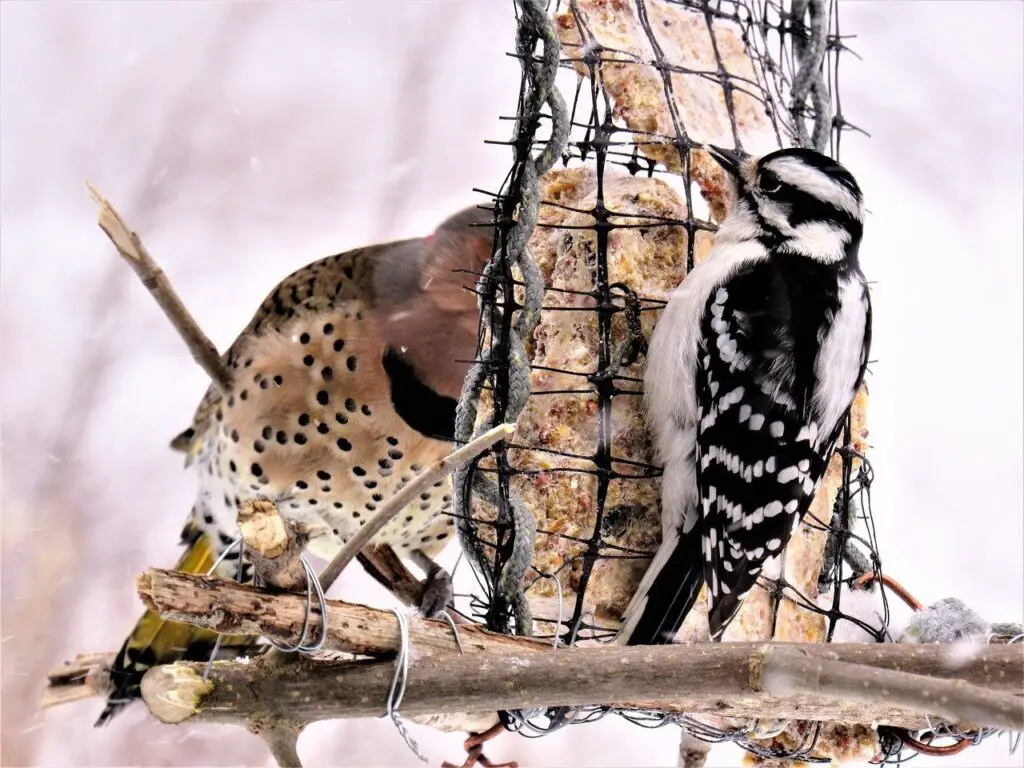
When deciding which feeder to use, consider using a tube, hopper, suet, or platform bird feeder rather than spreading the seed directly on the ground. This will help prevent uninvited guests, like squirrels and bears, from visiting.
Best Bird Feeders For Winter in Michigan
Here are the top five types of bird feeders that are ideal for Michigan winters:
- Tube Feeders: These are excellent for keeping seeds dry during snowfall and are mainly used for smaller seeds like nyjer or sunflower seeds, which are favorites among finches, chickadees, and nuthatches.
- Hopper Feeders: Resembling a house, hopper feeders protect seeds from the elements and can accommodate a variety of bird species. They’re great for birds that prefer a wide perch, like cardinals and blue jays.
- Suet Feeders: A must-have in cold weather, suet feeders provide high-energy fat to birds. They’re typically made of wire mesh and can attract woodpeckers, nuthatches, and starlings.
- Platform Feeders: These open feeders are welcoming to birds of all sizes, including larger species that may not fit on other feeders. They need to be cleaned regularly, especially when snow accumulates.
- Window Feeders: Attached directly to your window, these feeders offer an up-close view of visiting birds and are particularly enjoyable during the winter when you’d rather stay inside. They’re typically smaller and can attract birds like finches and sparrows.
Each feeder type serves different species of birds, so a combination of feeders will attract a wider variety of birds to your yard. Remember to maintain them well, especially during the harsh winter months, to provide a reliable food source for the birds.
Homemade Winter Bird Feeders
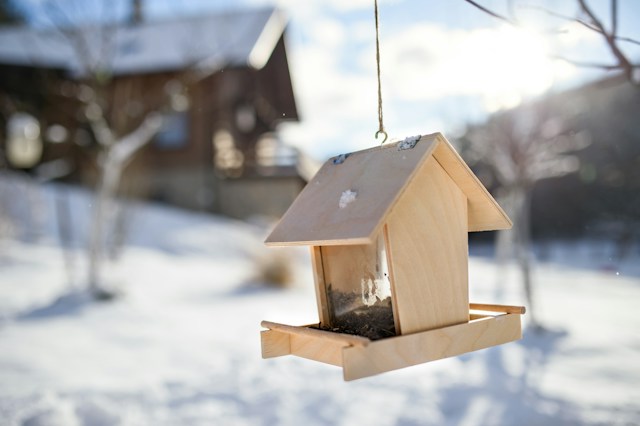
Sometimes the best solution for chosing a winter bird feeder is to make it yourself. As a kid we used to make simple bird feeders with milk cartons. We cut a window out of each end and stuck a stick through the carton for a perch. Punch a hole at the top and loop a piece to sting for hanging on low branches. These milk carton birdfeered held up fairly well due to their wax coating. Here are three creative ideas for homemade winter bird feeders that you can easily craft to support the local birds in Michigan:
- Pine Cone Feeder:
- Find a large pine cone and tie a string to its top for hanging. Mix equal parts of shortening or unsalted lard with birdseed, then press this mixture into the pine cone’s crevices. Roll the sticky cone in an additional layer of birdseed, then hang it from a tree branch. This type of feeder is particularly appealing to chickadees, nuthatches, and woodpeckers.
- Milk Carton Feeder:
- Take a clean, empty milk carton and cut out large windows on opposite sides, leaving the bottom for seed and enough of the sides to retain the seed. Decorate the carton if desired, then poke a hole through the top to thread a string for hanging. Fill the bottom with birdseed. This feeder can accommodate various bird types and can be a fun project for families.
- Bottle Feeder:
- Use a clean, plastic bottle and make small holes near the bottom just large enough for birdseed to trickle out. Insert wooden spoons or dowels beneath the holes to serve as perches. Fill the bottle with seed, screw the cap back on, and hang it upside down from a branch. Small birds like finches and sparrows will be able to perch and pick seeds as they spill out.
These homemade feeders not only help the birds but also serve as an excellent way to recycle household items and engage with nature right in your backyard.
Winter Bird Feeders and Other Wildlife
Be sure your feeder is inaccessible to deer and elk, too, as feeding these animals is banned in the Lower Peninsula and the Upper Peninsula’s core chronic wasting disease surveillance area, covering portions of Delta, Dickinson, and Menominee counties. Mess-free birdseed can help keep the ground clean, and a fence around the feeder can keep it out of reach. You can find more tips on the DNR Bird Feeding Tips page. Learn more about CWD and the deer and elk feeding ban at Michigan.gov/CWD.
Michigan Black Bears And Bird Feeders
Don’t worry about your winter bird feeders if you live in the black bear range! Most black bears should be settled in for their winter hibernation. Just mark your calendars for taking your feeders inside come March, when bears exit their dens and search for a replenishing meal.
Avain Diseases That Winter Bird Feeders Can Spread
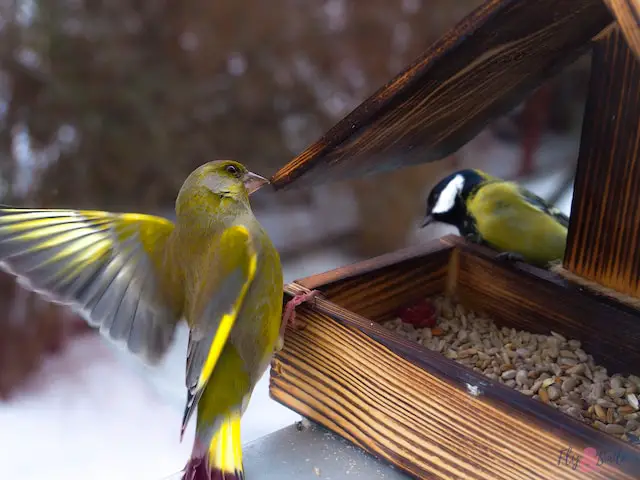
Winter bird feeders can sometimes contribute to the spread of various avian diseases if not properly maintained. Here are some of the diseases that can be transmitted through bird feeders:
- Salmonellosis: This bacterial infection is caused by Salmonella and can spread when birds congregate at feeders, particularly if the feeders are not regularly cleaned.
- Avian Pox: A virus that causes wart-like growths on the featherless surfaces of birds. It can be spread through direct contact with infected birds, by mosquitoes, or by contact with contaminated surfaces like feeders.
- Trichomoniasis: Also known as “trich,” this is a parasitic disease that affects the digestive tract of birds, causing lesions in the throat and making it difficult for the bird to eat or breathe.
- Aspergillosis: A respiratory disease caused by the fungus Aspergillus, which can grow on damp feed or in the debris beneath feeders.
- Mycoplasmal conjunctivitis: This bacterial disease is most commonly observed in house finches. It causes eye swelling and respiratory problems. Birds contract it from close contact with other infected birds at feeders or through direct contact with contaminated surfaces.
To minimize the risk of disease at bird feeders, it’s important to:
- Regularly clean feeders and surrounding areas to prevent the build-up of waste and mold.
- Change out seed after rain or snow to avoid mold growth.
- Provide multiple feeders to reduce crowding.
- Remove any visibly sick birds if possible, and clean the feeder thoroughly after any such incidents.
- Rotate feeder locations to avoid accumulation of waste in one area.
By maintaining good hygiene and management practices, bird enthusiasts can help prevent the spread of diseases and keep local bird populations healthy.
Watch for Reports Of Salmonella
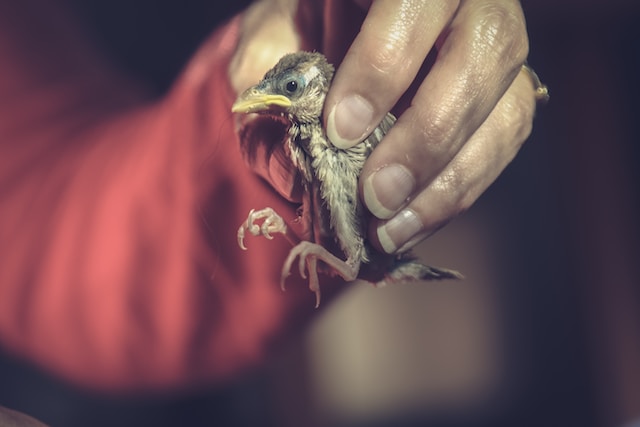
Back in January 2021, the Washington Department of Fish and Wildlife (WDFW) recommended that people temporarily discontinue feeding wild birds or take extra steps to maintain their winter bird feeders.
The newspaper Daily Cronicile notes that the state is currently witnessing a die-off of finches, such as pine siskins and other songbirds. This is attributed to salmonellosis, a common and usually lethal bird disease caused by the salmonella bacteria.
The range of the disease this winter could be worsened by what appears to be a food-driven migration of winter-roaming finches. This year, there seems to be an oddity where finches, generally winter in Canada’s northern forests, move south and are spotted in areas in more significant numbers than in average years.
Northern Michigan is the southern range for these finches; no reports have been made for this disease.
5 Tips for Establishing a Winter Bird Feeding Station
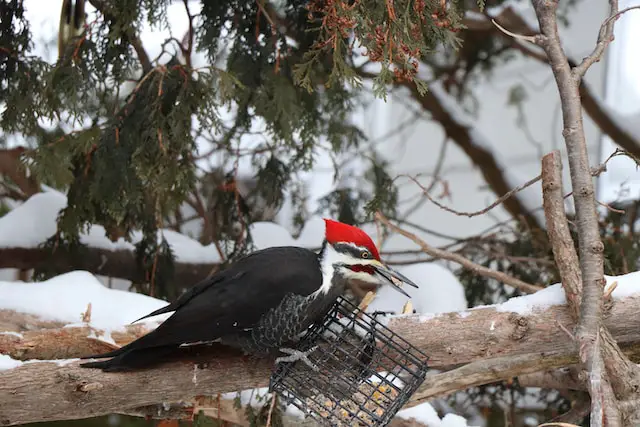
- Select the Right Feeders: Choose feeders designed for the birds you want to attract. Tube feeders are great for small birds like finches, while platform feeders can accommodate larger birds.
- Quality Birdseed: Invest in high-quality birdseed to attract a variety of birds. Black oil sunflower seeds are a favorite for many species.
- Regular Cleaning: Clean your feeders regularly to prevent the spread of disease. Disinfect them with a 10% bleach solution and rinse well.
- Protection from Predators: Place feeders near cover, like bushes or trees, to protect birds from predators, but also in a clear area to discourage squirrels and cats.
- Consistent Supply: Keep your feeders well-stocked, especially during severe weather when birds rely most on your offerings.
Winter Birds of Michigan – 10 Birds You Might See Visiting Your Winter Bird Feeders
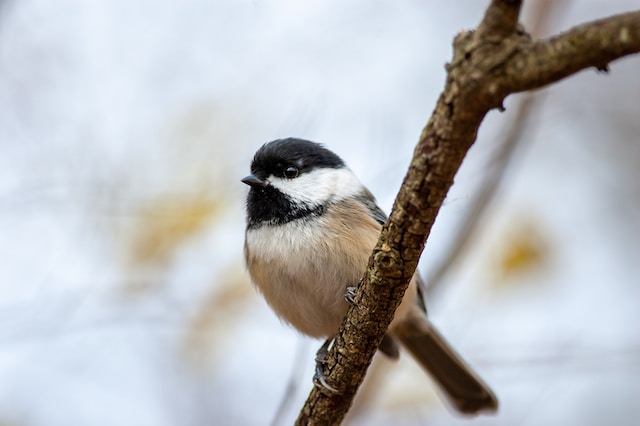
What birds stay in Michigan for the winter
As Michigan’s lush greens turn to crisp whites and the air gets that unmistakable bite, you might think all our feathered friends would head south for a winter getaway. But nope, not all of them are snowbirds! Some actually stick around, toughing it out through the cold months. So -What Birds Stay in Michigan for the Winter? We have some cool customers — from the vibrant Northern Cardinal to the chatty Black-capped Chickadee.
Here are the top ten Michigan winter birds that you might see visiting your winter bird feeders in Michigan:
- Black-capped Chickadee: A small, curious bird with a black cap and bib, white cheeks, and gray back and wings. They are pretty friendly and may even investigate humans nearby??.
- Northern Cardinal: Recognizable by the male’s bright red plumage and the female’s more subdued brownish-red. They are a favorite among birdwatchers and frequent visitors to bird feeders??.
- Red-breasted Nuthatch: Small, active birds with a black stripe through the eye and a rusty underbelly. They’re known for their ability to walk down trees head first??.
- Downy Woodpecker: The smallest woodpecker in North America, it has a white back, black wings, and a white belly. They are attracted to suet feeders??.
- Dark-eyed Junco: Often referred to as “snowbirds,” these gray and white sparrows are common at ground feeders or when seed spills onto the ground??.
- American Tree Sparrow: These little birds with rufous caps and eye-lines are winter visitors that often feed on the ground or at low feeders??.
- White-breasted Nuthatch: With their striking black, white, and blue-gray coloring and their habit of scampering down tree trunks, they are a delight to watch at suet or seed feeders??.
- House Finch: The males have a vibrant red head and breast, while females are more subdued. They are common at feeders and enjoy seeds??.
- Blue Jay: These large, colorful birds are known for their intelligence and complex social behaviors. They like to feed on seeds, especially peanuts??.
- American Goldfinch: Bright yellow in the summer, they molt to a duller color in the winter. They are particularly fond of thistle and sunflower seeds??.
Setting up a bird feeder that caters to the dietary preferences of winter birds Michigan can make your home a hotspot for avian activity during the cold months.
FAQs About Winter Bird Feeding in Michigan
What types of birds can I expect to visit my winter feeders in Michigan?
Michigan’s winter landscape is often frequented by a variety of bird species that are well-adapted to the cold. You can expect to see Northern cardinals, red-breasted nuthatches, downy woodpeckers, dark-eyed juncos, American tree sparrows, and an irruption of northern finches such as common redpolls, pine siskins, and evening grosbeaks at your feeders?.
How do I choose the right type of feeder for winter bird feeding?
The key to choosing the right feeder is to match it with the types of birds you want to attract and the kind of seeds you’re using. Tube feeders are great for small seeds and small birds; hopper feeders offer protection from the elements and suit a variety of birds; suet feeders are perfect for providing high-energy food; platform feeders can cater to birds of all sizes; and window feeders offer a close-up view of the birds for your enjoyment?.
What are the risks of bird diseases at winter feeders, and how can I prevent them?
Bird feeders can potentially spread diseases such as salmonellosis, avian pox, trichomoniasis, aspergillosis, and mycoplasmal conjunctivitis among birds. To minimize these risks, it’s important to clean feeders regularly, change out seed after rain or snow, provide multiple feeders to reduce crowding, remove visibly sick birds, and rotate feeder locations?.
More Winter Bird Feeder Resources
Are you a birding beginner? Listen to the Wildtalk Podcast episode “This Podcast is for the Birds” to hear from MI Birds, a public outreach program by Audubon Great Lakes and the DNR, on resources to help you get started. Learn about Michigan Birds by following MI Birds on Facebook, Instagram, and Twitter and visiting MI Birds online. Questions? Contact the DNR Wildlife Division at DNR-Wildlife@michigan.gov or 517-284-9453.

